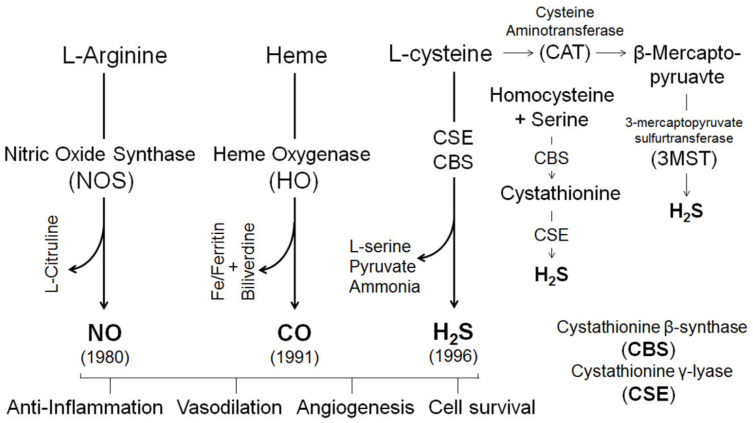Figure 3.
Gasotransmitters: biosynthesis and function. Nitric oxide (NO), carbon monoxide (CO), and hydrogen sulfide (H2S) were identified as gasotransmitters in 1980, 1991 and 1996, respectively. NO is synthesized by a family of NO synthases (eNOS, nNOS or iNOS) via converting l-arginine to l-citrulline. CO is synthesized by heme oxygenases (HO-1 or HO-2) by oxidizing heme to produce CO along with biliverdin and iron/ferritin. H2S is mainly synthesized by cystathionine β-synthase (CBS) or cystathionine-γ-lyase (CSE) by converting l-Cysteine to l-Serine or Pyruvate and NH4+; H2S can also be produced by condensation of homocysteine and serine into cystathionine by CBS and by CSE to produce H2S. In addition, cysteine aminotransferase (CAT) and 3-mercaptopyrivate sulfurtransferase (3MST) can also catalyze the biosynthesis of H2S from l-Cysteine via the intermediate product as β-Mercapto-pyruvate. The gasotransmitters NO, CO and H2S act to regulate cell survival, anti-inflammation, cardioprotective angiogenesis and vasodilation.

